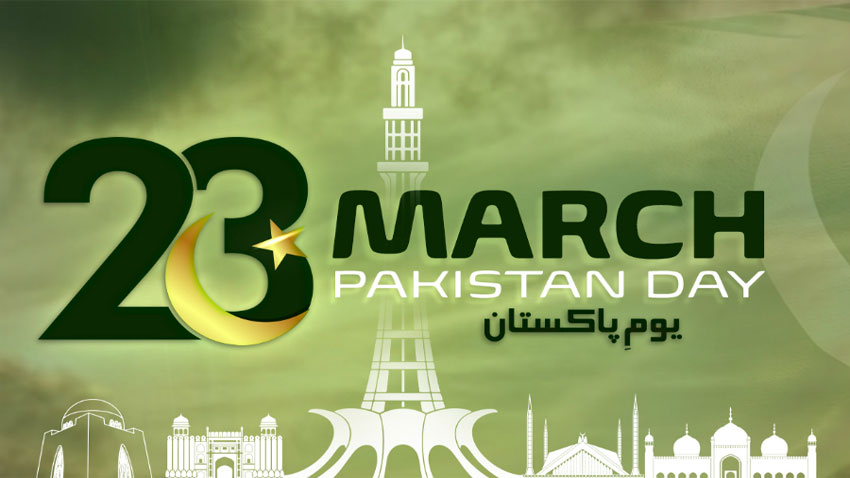- Advertisement -
PESHAWAR, Mar 22 (APP):Pakistan Resolution of March 23, 1940, was a turning point in the struggle towards independence and Pakistan Movement.
After the passage of the Pakistan Resolution, the Muslims of the Sub-Continent under the leadership of the Father of the Nation, Muhammad Ali Jinnah, and other leaders of All India Muslim League waged a historic movement for the establishment of Pakistan and achieved that goal in a short period of seven years.
Pakistan nation in the country and abroad commemorates March 23 each year to pay homage to the leaders of the Pakistan Movement with a renewed pledge to struggle for its strengthening. Special events are organized in this regard.
Talking to APP, Dr Fakharul Islam, an Advisor, Research & Academician Outreach Editor Research Journal ‘Policy Perspective’ at the Institute of Policy Studies said that after the passage of the resolution, the Movement for Pakistan was accelerated and incidents occurred in its follow up prove that contention.
In the elections of 1937 held before the Pakistan Resolution, he said the All India Muslim League managed to win only 20 percent of seats reserved for Muslims while in the elections of 1946, it clinched 95.5 percent Muslim seats.
After the election of 1946, these elected representatives on Muslim seats held a convention at Delhi wherein they categorically stated that they had won the election in the name of Pakistan and now they would not take rest till the achievement of this goal.
Elaborating on the political developments before the Pakistan Resolution, he said that Muslims were considered a minority in India because they were lesser in number as compared to the Hindu community. However, the two distinguished characteristics were such that they not might be considered a manageable minority.
The first distinguishing characteristic was that they had ruled over India for more than 800 years and the second characteristic was that they were occupying certain areas in India where they were in numerical majority. So, any nation having these two characteristics might not considered a minority.
The Muslims of India wanted to regain their past glory and remember that the whole Pakistan Movement revolved around these two desires of the Muslims and the desire for regaining the past glory of the Muslims was a catalyst for the Pakistan Movement.
The Muslims of India tried their best to join with Hindus, so they could wage a joint struggle against the British imperialist power. History has some evidence for the desires of the Muslims.
The War of Independence in 1857 was fought by Muslims and Hindus collectively against British imperialism. But unfortunately, that war ended in defeat for the natives and a victory for British imperialistic power.
The era after the 1857 War of Independence was a dark age for Muslims. On one hand, the British imperialistic power let lose the reign of terror against the Muslims. Because they considered Muslims to be responsible for the War of independence to which the Britishers called a mutiny or revolt.
He said that unfortunately during that testing times, the Hindus parted their ways with the Muslims and they joined the Britishers and for that friendly gesture. Britishers later rewarded the Hindus community with so many political and economic concessions.
Despite the role played by Hindus in the post 1857 era, the Muslims did not lose hopes of joint struggle with Hindus against the British imperialism and the most significant event in the history of India was the one when Muslims entered into an agreement with the Hindus and this significant agreement was called the Lucknow Pact 1916.
Dr Fakharul Islam, who has also served as Director Pakistan Study Centre and Director Area Study Centre at University of Peshawar, said that everybody knows and even the Hindus writers witnessed to the fact that the agreement was brokered by the Founder of Pakistan, Quaid-e-Azam Muhammad Ali Jinnah and in memory of that historic agreement the Hindus bestowed upon the tile of the Ambassador of Hindu Muslim Unity.
Unfortunately, due to the outbreak of World War I and then the engagement of Muslims in the historic Khilafat Movement, the Lucknow Pact did not show any progress, and when during that period the British authorities sent Simonds Commission, to give India a constitution and Muslims and Hindus tried to give their own packages or formulas for the future constitution.
The formula of Hindus was absolutely against the interest of the Muslims and that formula is called the Nehru Report 1928. Although Quaid-e-Azam Muhammad Ali Jinnah came with befitting rejoinder to the Hindus formula by giving his historical 14-Points Formula. But, the Indian National Congress did not abandoned their anti-Muslims policy and their attitude during the Roundtable Conferences was also against the interests of the Muslim. But, the most important stage of history was that when a result of 1937 elections, the Indian National Congress formed governments in some provinces of India.
They were absolutely against the interests of the Muslims, their policies, attitude and their actions against the Muslims let the Muslims to the conclusion that Quaid-e-Azam Muhammad Ali Jinnah in one of its statements categorically said that now they are parting ways with Hindus and those sentiments led to the holding of All India Public Meeting at Lahore on March 21, 22, and 23, 1940 when the Lahore Resolution was passed, which has to important points.
One of the points of the resolution was that the Muslims of India rejected the existing law enforced in the country which was the India Government Act of 1935. Because to them that Act was an obstruction in giving Muslims safeguards and protection of their constitutional, political, and economic rights. So, they rejected the Act of 1935.
Although point 2 of the Lahore Resolution is very significant and known to everybody, who knows about the history of the freedom movement. At that point, the All India Muslim League leadership vowed and demanded those areas where Muslims were numerically in the majority and two such areas were in the British Indian setup. One area was the North-Western India where today Pakistan is situated and the North-Eastern Zone, where today Bangladesh is situated.
So, the Lahore Resolution demanded that in those two areas, some federating units should be organized and regrouped where the Muslims should be given their legitimate right including religious, political, social, and economic rights.
This was the Lahore Resolution and after that Quaid-e-Azam Muhammad Ali Jinnah abandoned his previous stand to be united with the Hindu community. He said that now it is parting of the ways.
The best thing about the Lahore Resolution, Professor Dr Fakharul Islam said is that it contains a spirit, which could be even today implemented in the today Pakistan. The spirit is that the resolution contains the spirit or the principles of regional autonomy. It we want to implement the Lahore Resolution in today’s Pakistan, we would have to give autonomy to the federating units of Pakistan and that can be done through the implementation of the Constitution of 1973, in letter and spirit.

